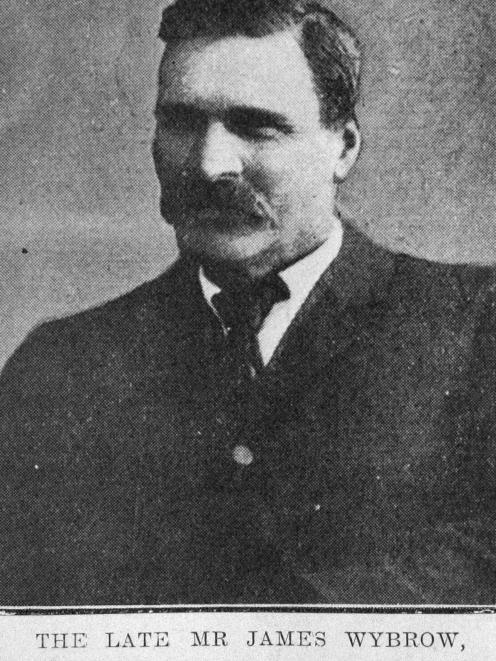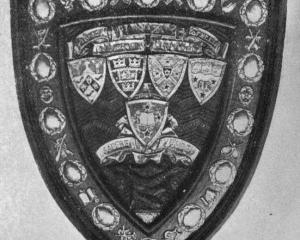
The late Mr Wybrow’s early manhood was mostly spent at Stewart Island, Bluff and Fortrose. He married a daughter of the late Captain Perkins. His family consisted of nine sons and four daughters.
Mr Wybrow followed gold mining, and experienced all the hardships of early pioneering. When in a reminiscent mood he would tell of carrying a 50-pound bag of flour and other goods on his back from the Bluff to Fortrose. At the same time Mrs Wybrow, who accompanied him, carried the baby; the journey on foot taking two days each way. He was among the early miners at Gabriel's Gully and was also at the wreck of the Tararua at Waipapa Point. He was one of the first on the scene and was able to render practical assistance. Twenty-five years ago he took up land in the Haldane Settlement and was a successful farmer. He sold out a few years ago and retired, and has since resided in Waikawa.
Mr Wybrow was a strong man physically and mentally, and at election times was always a factor to be reckoned with in the district in which he lived.
National arterial roads coming
The Minister of Public Works, the Hon J.G Coates, has announced his intention to introduce a Bill to inaugurate a system of nationally controlled arterial roads in New Zealand.
The Minister's statement says: “The development of motor traffic in recent years has greatly altered the conditions of travel, and created the necessity for the improvement of our main highways.
Formerly, rapid traffic by land, whether of passengers or goods, was effected solely by means of railway facilities, and the objective of road construction and maintenance was to provide ways sufficient for horse-drawn wheeled traffic, feeding the railways where railways existed, and providing the means of conveyance within and between localities.
It has now become clear in all parts of the world which are closely inhabited that to a large extent the rapid traffic of the future will be conducted by motors, equipped with rubber tyres and requiring, therefore, a much higher class of construction and more extensive maintenance of road surfaces.
Main arterial roads should be constructed, reconstructed and maintained by the dominion as a whole, while roads of purely local interest or country interest must be constructed and maintained wholly by local body finance with such assistance from the Government, in the way of grants for construction and subsidies for metalling, as the financial circumstances of the dominion will permit.’’
Cottage Hospital for Palmerston
In response to a requisition made by a number of residents of the Palmerston Borough, the Mayor, Hon T.H. Clark, called a public meeting in the Palmerston Town Hall on Tuesday evening to discuss the proposal of the Otago Hospital Board to establish a cottage maternity hospital in Palmerston. The Mayor said he strongly supported the movement for the establishment of the maternity hospital. He contended that everything possible should be done to save the wastage of infant life, and to afford medical and nursing facilities to women at the critical time of confinement.
After several speakers supported the proposal, Mr Clark moved that the meeting endorse the proposal of the Director of Hospitals to establish a cottage maternity hospital at Palmerston and request the Otago Hospital Board to take immediate steps for the completion of the scheme.
The motion was passed unanimously. — ODT, 28.7.1921.












